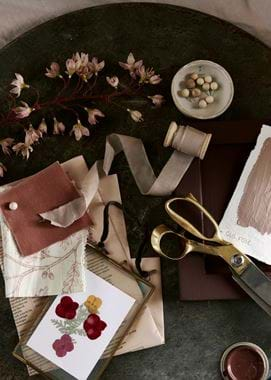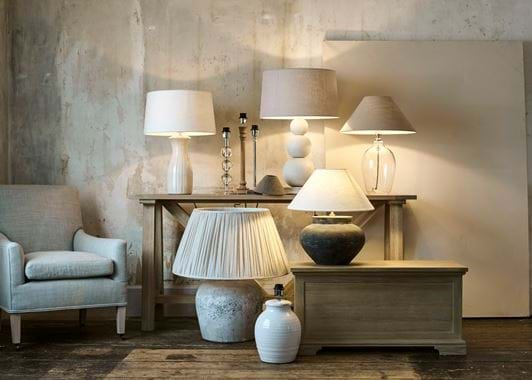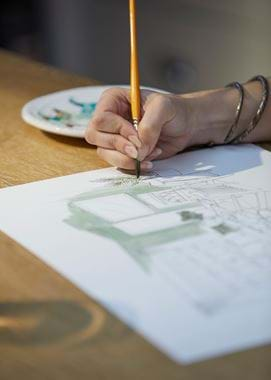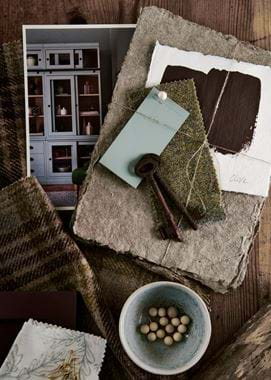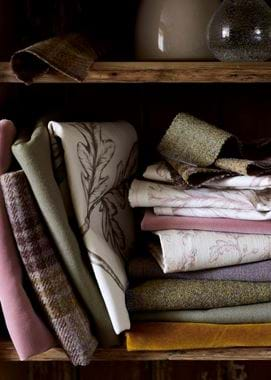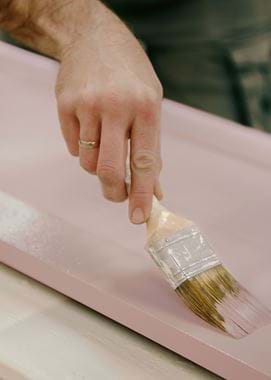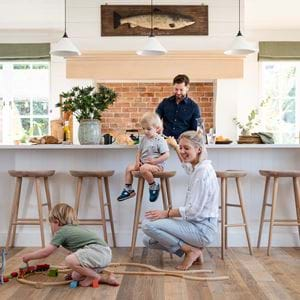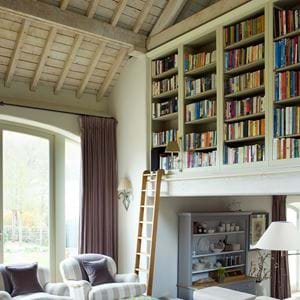Our interior design journal archive
Our interior design journal archive
One of the questions we’re often asked in our stores is how you can recreate the same calm and considered feel in your own home. And, while our Home & Kitchen Design Services are there to do exactly that, we’ve also shared quite a bit of advice over the years that will give you the tools you need if the DIY approach is right for you. So, we’ve delved into our archives to gather all that advice together and we’ve broken it down into the four essential stages of decorating before furniture, textiles and accessories come into play. Simply scroll through to the section that you’re working on right now, look for the quick links at the bottom of each, or grab a cup of tea and settle in to read the whole thing.
Before you begin
While we know it’s tempting (and exciting) to dive straight into choosing colours and laying out furniture, press pause for a moment – a little forward planning can make all the difference. Don’t worry, it doesn’t necessarily need to be extensive. As our co-founder John and his wife, interior designer Emma Sims-Hilditch, shared in their interview, it can be as simple as taking a step back and having a good think about how you want your home to feel. From there, it’s much easier to make individual decisions based on whether they harmonise with this vision or not. Blogger, journalist and author of ‘101 Interior Design Answers’, Kate Watson-Smyth also advocates forethought before you jump in, and in this blog, she’s given us six questions – who, what, when, why, where and how – that you can use to bring clarity to every aspect, from storage to budget to where you’re going to shop.
If you feel that your project needs some real sit down time before you can begin, then our definitive guide to planning might just help. Put together with Neptune store designer Fred, we’ve broken these early stages down into five steps – from getting to know your room to gathering around you an expert team of tradespeople. We’ve also covered things like whether you need to involve a professional designer.
Finally (and probably everyone’s favourite part of the planning process), we’re talking all things moodboards in this post with the home designer from our Cheltenham store, Jessica. So, if you’re wondering how to create a moodboard, at what point you should make yours, and whether, in fact, you actually need one, this is the article to head to.
Demystifying the design process with John and Emma Sims-Hilditch
Six questions you need to ask before you start a room redecoration
Layout
Each of the aspects we’re moving on to now – layout, followed by lighting and colour – are equally as important as the others, but layout is probably the one you’ll tackle first. Symmetry (or the deliberate lack of it) is a hot topic with us, and our co-founder John is back again in this article from a few years ago to share his philosophy on symmetry and asymmetry, and how it’s a big part of the Neptune look. On the same subject, we’re offering up a helpful example of how asymmetry works with this blog by picking apart what exactly it is that’s so pleasing about one of our bathroom set-ups.
Another fundamental approach to layout (we think) is looking at things from the centre of your room and building out from there – that way, you’ll avoid all your furniture being against the walls facing in on an empty space in the middle. Interior designer Lauren Gilberthorpe shares her advice on how to do that here with three example layouts.
Both those things are principles that you can apply to just about any room, but if you’re tackling the more specific problem of how to lay out a small space, we’re offering a few tips that we’ve picked up over the years in this blog. We might be talking about how to choose furniture for your spatially-challenged room, but there are ideas here that’ll definitely apply at the layout stage, such as considering whether having lots of floor space is really so important.
Last but not least, and getting more specific still, it’s living room layouts that we’re putting under the microscope in this piece. The ultimate multitasking room (often a place for reading, TV-watching, entertaining, playing and even home-working), we felt it deserved a blog all of its own, but there are certainly principles here that you could apply elsewhere in your home too.
Symmetry: thoughts from our founder
How to bring furniture into the middle of the room with Lauren Gilberthorpe
Lighting
No matter how well-decorated a room is, if the lighting’s not right, it can still feel uncomfortable to live in (especially here in northern Europe where our natural light levels aren’t always great). So when you’re rethinking your room’s lighting scheme, start with this article from interiors journalist Claudia Baillie, where she breaks down some of the things to consider by room, from where and how to use the different lighting types to essential advice on circuits and dimmers. Lighting a dining room? Designer Samantha Todhunter has gone into even more detail on that here.
That might be enough, but if you’re looking for something a bit more specific, we’ve got a handful more articles that dig deep into the subject of lighting. As deep as the lightbulbs themselves, in fact, which we’re talking about here, demystifying lightbulb lingo like lumens and the Kelvin scale, and comparing the merits of LED, CFL and halogen types. There’s also our guide to wall lights – the unsung heroes, we think, of the lighting world, and a style that’s not always considered. And, thinking specifically about those of us living in countries with long winter months, we’ve also shared some ideas on lighting for a cosy home at this time of year too.
Lighting your dining room: an interior designer’s tips
A lightbulb moment: how to choose the right bulb for your room
Colour & paint
For some people, picking out colours is the most exciting part of the design process. But for others, it’s decidedly less so. If you’re in the latter camp, then luckily for you, it’s one of our favourite topics to write about. Begin with this article – it explains why we’ve divided our core paint collection into seven palettes, and how you can use those to plan a room’s scheme quickly and easily. Sticking with the basics, this blog walks you through, firstly, how to create an edited colour palette that suits you and your home (and why you might want to keep it edited) and then talks about how to weave it through every room so there’s consistency and a sense of flow.
If you’ve got your heart set on a particular colour but you’re not sure how best to work it into your home, then we have lots of blogs dedicated to individual or groups of hues. Like how to decorate with pink, painting with dark tones, this blog on using rust shades and this one (again with interiors author Kate Watson-Smyth) on creating a blue palette. If it’s a kitchen’s palette that you’re designing, you might also like this piece and its specific advice on choosing cabinetry colours.
Palette decided, a big part of using it successfully is in the painting. So, unless you’re hiring a professional decorator (or you’re a dab hand yourself), you might want to read our potted guide to painting. And even if you are leaving it to an expert, it’s still a good idea to familiarise yourself with the different finishes, which we’ve explained here, so you can advise them on what you’d like.
Our paint palettes: making selection easy
Using fewer colours to create a core palette
Painting confidently with dark tones
How to decorate with shades of blue

